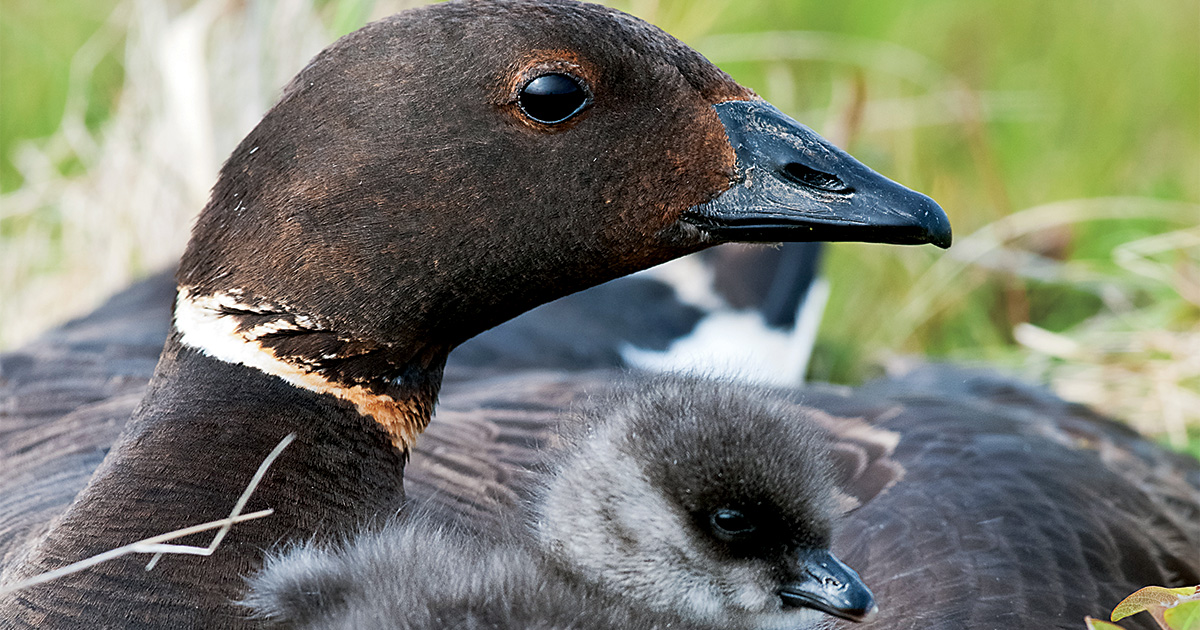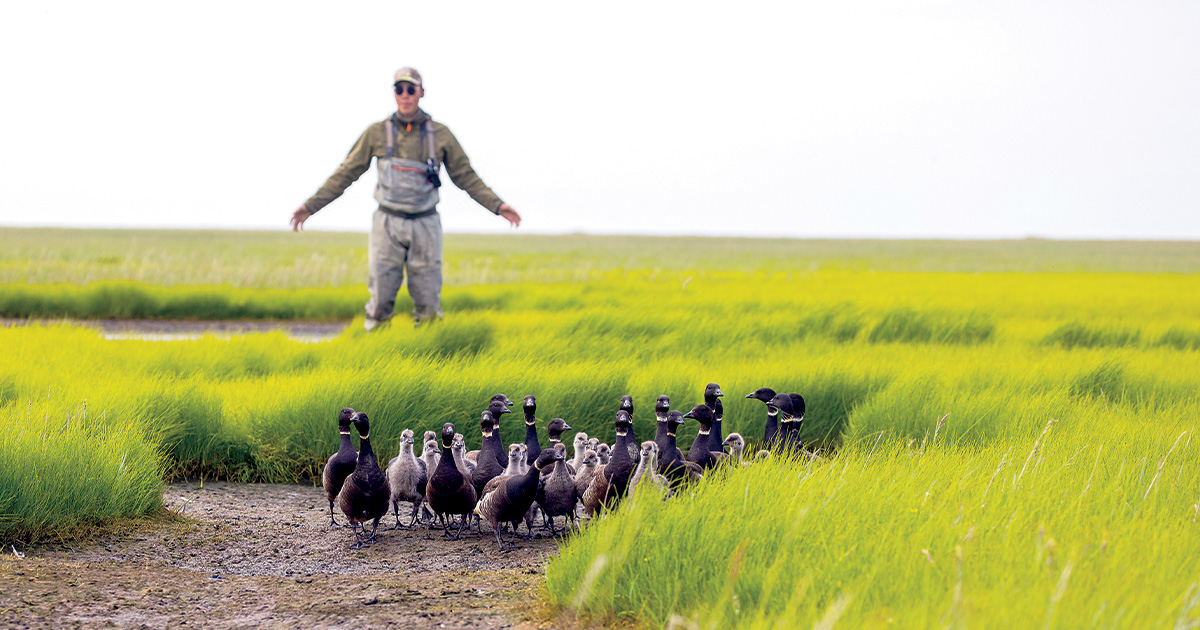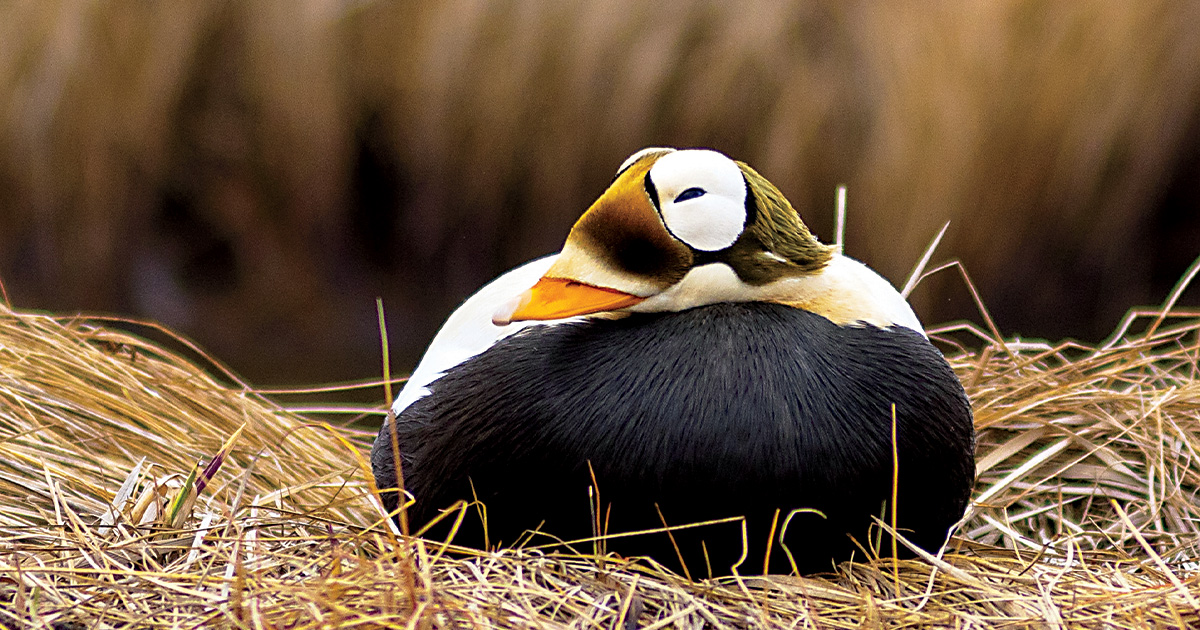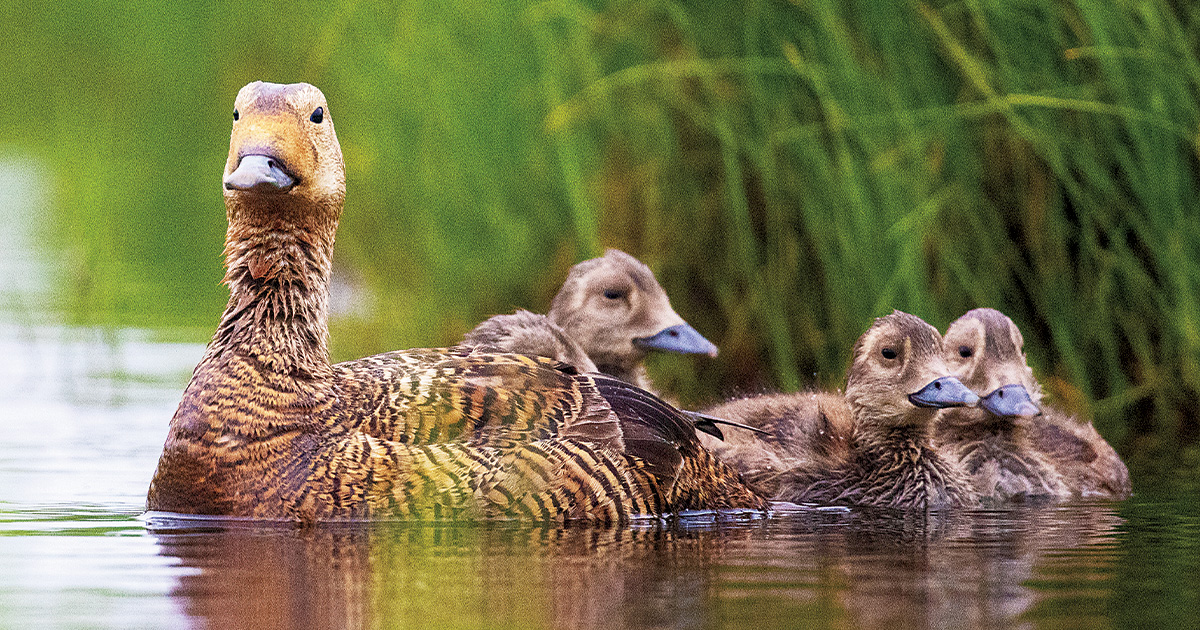Understanding Waterfowl: Northern Exposure
In Alaska, a warming climate is having profound impacts on waterfowl and their habitats
In Alaska, a warming climate is having profound impacts on waterfowl and their habitats

Recent research shows that local populations of breeding Pacific brant have declined in the face of climate-related changes to their habitats.
It’s November 3 on the Izembek Lagoon near Cold Bay, Alaska. A 10-year-old female Pacific brant is staging with other birds and facing what may be the biggest decision of her life. The temperature is a relatively warm 45 degrees Fahrenheit, and the wind is blowing out of the northeast at 25 miles per hour. This bird must decide whether to stay put and spend the winter in coastal Alaska or migrate some 3,000 miles to her species’ traditional wintering grounds on the Baja Peninsula of Mexico, just as she has done in each of the past nine years.
Our brant wears a plastic yellow tag on one of her legs and an aluminum US Fish and Wildlife Service leg band on the other. A decade earlier, waterfowl researchers banded the bird when she was a flightless gosling on the Tutakoke River brant nesting colony on Alaska’s Yukon-Kuskokwim (Y-K) Delta. Biologists also banded the bird’s parents and some of her relatives as part of a long-term study launched in 1984 in part to understand the effects of a changing climate on nesting brant in Alaska.
Researchers have learned from this study that brant are nesting about five days earlier than they did 30 years ago. They have also documented that breeding habitats on the Y-K Delta, where most Pacific brant nest, are changing quickly due to saltwater intrusion and warmer temperatures. Habitat changes combined with other climate-related impacts, such as the northward expansion of red foxes, have led to local declines in the breeding population of Pacific brant. In a complex twist of ecology, the decline in brant numbers has disrupted the delicate balance that historically existed between the birds and the coastal marsh plants on which they feed. With fewer brant regularly grazing and fertilizing the vegetation, the quality and abundance of preferred foraging habitat have declined in large areas of the colony.

For nearly four decades, researchers have been studying Pacific brant in Alaska. Today, their findings are helping wildlife managers plan landscape-scale conservation efforts.
With insufficient food resources to build the body reserves needed to successfully nest, our brant, like many raised on the Tutakoke River colony, delayed breeding, in her case until she was four years old. Brant in good body condition typically begin breeding when they are two or three years old. Long-term data also show that nesting success and brood survival have declined sharply at the Tutakoke River colony. In fact, our brant was successful in only three of six nesting attempts, and only three of the 12 goslings that she hatched during these successful nesting efforts survived to adulthood. Two of her three surviving offspring were male; the lone female is now five years old and has yet to make a nesting attempt. This past summer, researchers spotted her near Teshekpuk Lake on Alaska’s North Slope, an area where nonbreeders and failed nesters often gather to molt. The number of brant in this area appears to be growing every summer, raising additional concerns among waterfowl managers.
Back at Izembek Lagoon, our brant has yet to decide where to spend the winter. Several decades ago, the decision to migrate would have been easy, as more extensive ice on the lagoon limited access to eelgrass, a critical winter food source. Now warmer ocean temperatures and weather have significantly reduced the likelihood that Alaska’s coastal waters will freeze. In the early 1980s, less than 5 percent of Pacific brant wintered in Alaska. Today, the number has grown to almost 40 percent. Our brant’s parents and more distant relatives all migrated to Mexico, and she is drawn by tradition and genetics to follow their lead. However, for increasing numbers of brant, especially those in poor body condition, the benefits of making the long, arduous migration aren’t worth the risk.
In some ways, brant and many other waterfowl species are lucky, because they have the ability to move to new areas in response to changing environmental conditions. The birds are amazingly resilient if they have the geography—and habitat—to adjust to changes. In fact, some waterfowl species may even derive benefits from a changing climate. Mallards, for example, appear to be renesting more often in northern latitudes when their first clutches are lost. However, waterfowl species that live at the northern extremes of the continent, such as the spectacled eider, may be less fortunate.
What can we do in response to these changes? First, we need to recognize that change is occurring, and that it will likely have a variety of impacts on waterfowl in the years ahead. Second, we should continue to invest in landscape-scale habitat conservation, which will help waterfowl adapt to changing conditions. We must also continue to support research and monitoring programs, as these efforts are important not only for documenting changes in waterfowl populations and their habitats, but also for building our understanding of what is driving those changes. After all, if not for the decades of past research, the story told in this article would not exist.
Finally, let’s circle back to the dilemma our brant was facing at the beginning of this story. What should she do—migrate to Mexico or stay in Alaska?

Spectacled eiders spend their entire lives on or near the Bering Sea. They breed along the northern coasts of Alaska and Russia. During the winter, they have traditionally fed in open fissures in the pack ice on the Bering Sea. However, in recent decades warming ocean temperatures have reduced the amount of sea ice. This has led to changes in the distribution of the eiders’ prey foods and reduced the protection that the ice provides from waves. Spectacled eider breeding habitats have also been altered by more frequent coastal flooding and changes in the abundance of prey species in coastal ponds, which provide crucial food resources for adult birds and ducklings. These changes and others have caused severe declines in Alaska’s spectacled eider population. In response, the US Fish and Wildlife Service listed the spectacled eider as a threatened species in 1993. While spectacled eider numbers have stabilized at around 3,000 to 4,000 breeding pairs in Alaska, adapting to future habitat changes will be challenging, as dispersing farther north is not an option.

Dr. Mark Lindberg is a retired professor of wildlife ecology. He has studied waterfowl across North America since 1984, including his PhD research on black brant on the Yukon Delta.